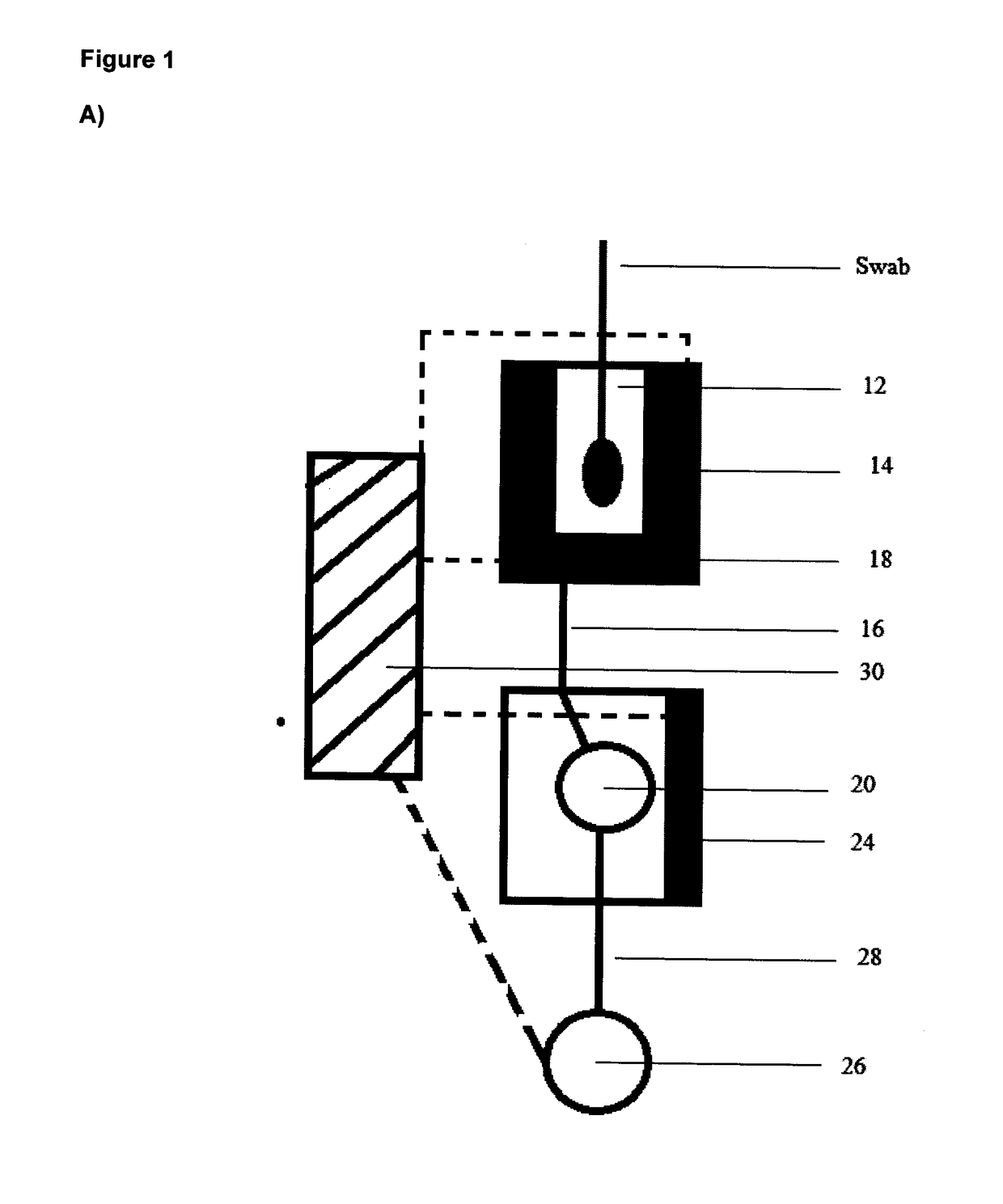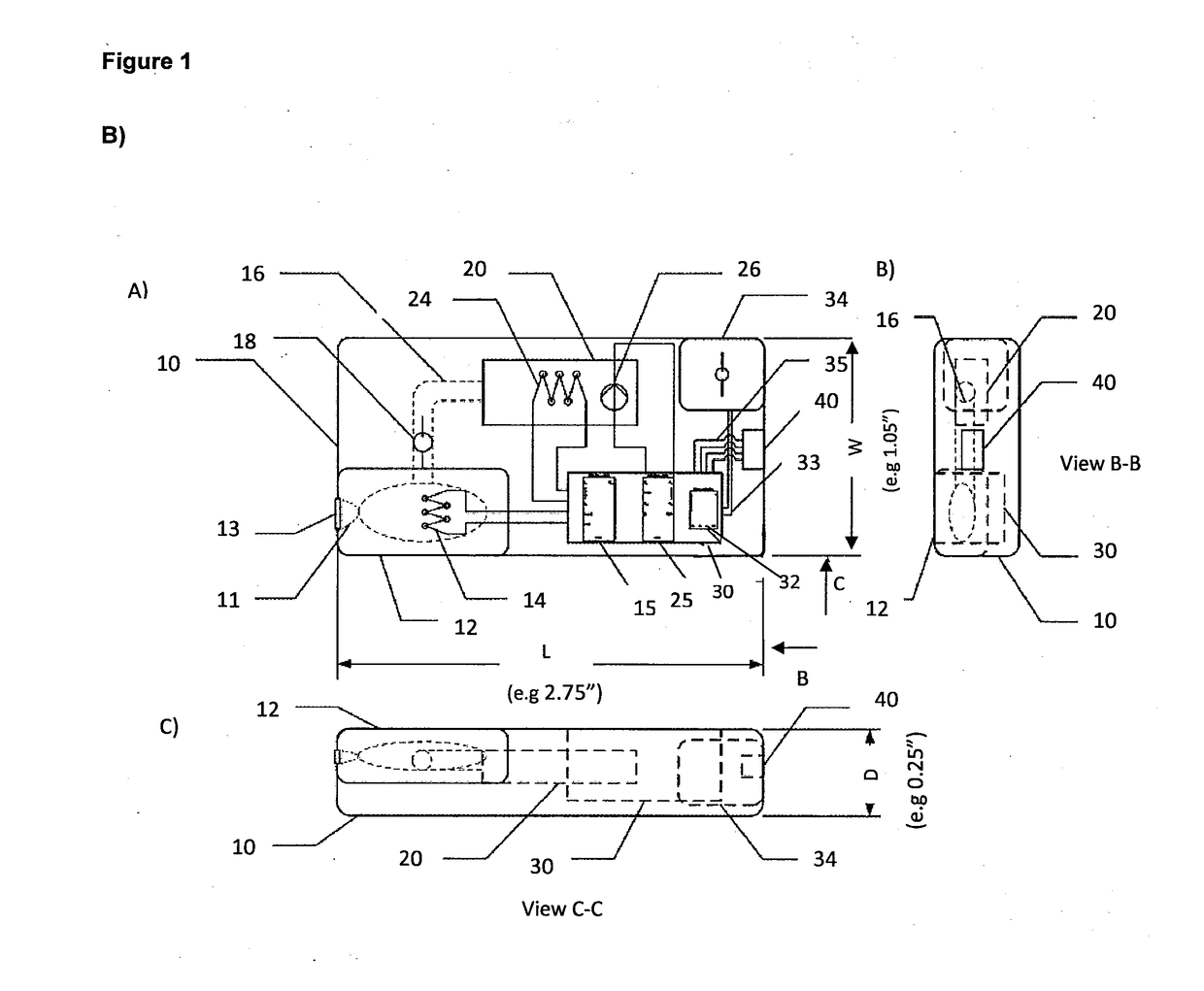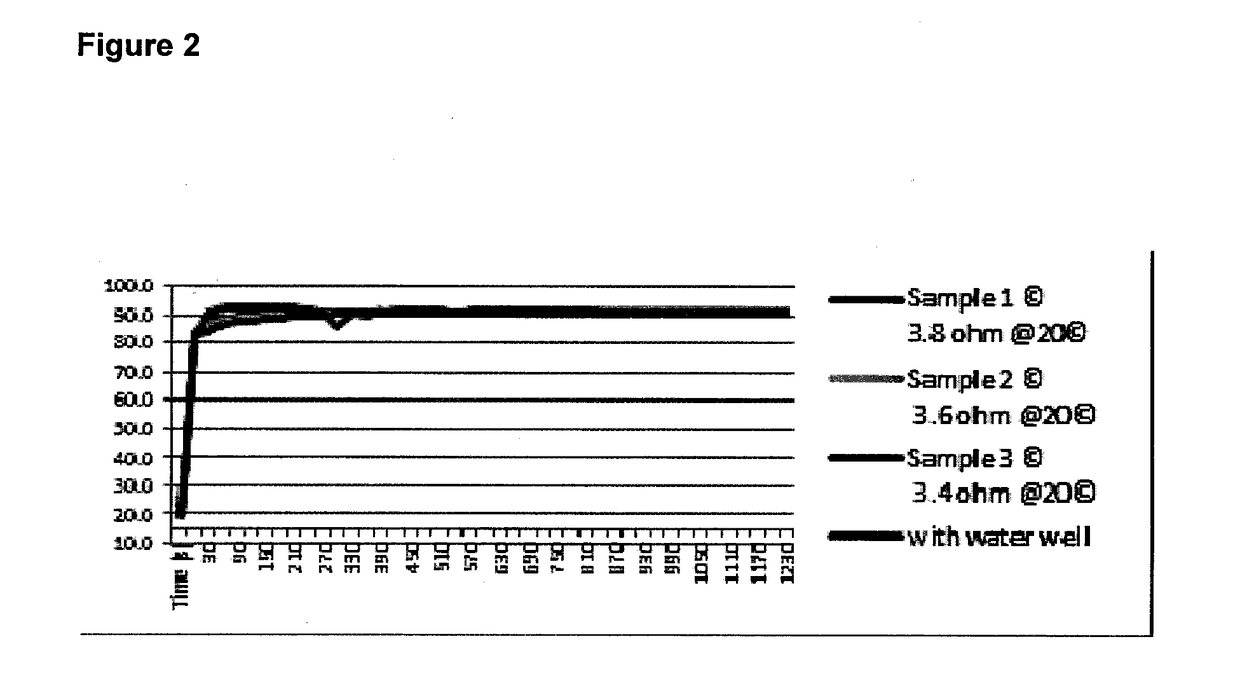Point of care polymerase chain reaction device for disease detection
a polymerase chain reaction and disease detection technology, applied in the field of point-of-care or point-of-care (pon) diagnostic devices, can solve the problems of limited application of molecular diagnostic tools, limited application of molecular diagnostics in at-home or resource-poor settings, and substantial “off-chip” clinical sample preparation time and the requirement for skilled technicians
- Summary
- Abstract
- Description
- Claims
- Application Information
AI Technical Summary
Benefits of technology
Problems solved by technology
Method used
Image
Examples
example 1
ice for Pathogen Detection
Device Design
[0075]A hand-held, disposable device 10 is provided (FIG. 1B). The device 10 comprises a first extraction chamber 12 having a maximum volume of about 250 μl. The extraction chamber 12 includes a lysing reagent of PBS with 0.1% Triton X-100. The extraction chamber 12 includes an opening 11 for accepting the head of a sample-containing swab and the chamber 12 is sized to accept the swab. A lid 13 is provided to seal opening 11 of the extraction chamber 12. Closing of lid 13 activates the device 10 by causing release of buffer into the extraction chamber 12 from a blister pack. The extraction chamber 12 is fitted with a first self-regulating heater 14, activated on closing lid 13, that heats the extraction chamber 12 to a temperature of about 95° C. and maintains this temperature for at least 2 minutes, e.g. by the use of a timer. The heater 14 is connected to control unit 30 and powered by battery 34.
[0076]The extraction chamber 12 is connected b...
PUM
| Property | Measurement | Unit |
|---|---|---|
| temperature | aaaaa | aaaaa |
| time period | aaaaa | aaaaa |
| resistances | aaaaa | aaaaa |
Abstract
Description
Claims
Application Information
 Login to View More
Login to View More - R&D
- Intellectual Property
- Life Sciences
- Materials
- Tech Scout
- Unparalleled Data Quality
- Higher Quality Content
- 60% Fewer Hallucinations
Browse by: Latest US Patents, China's latest patents, Technical Efficacy Thesaurus, Application Domain, Technology Topic, Popular Technical Reports.
© 2025 PatSnap. All rights reserved.Legal|Privacy policy|Modern Slavery Act Transparency Statement|Sitemap|About US| Contact US: help@patsnap.com



